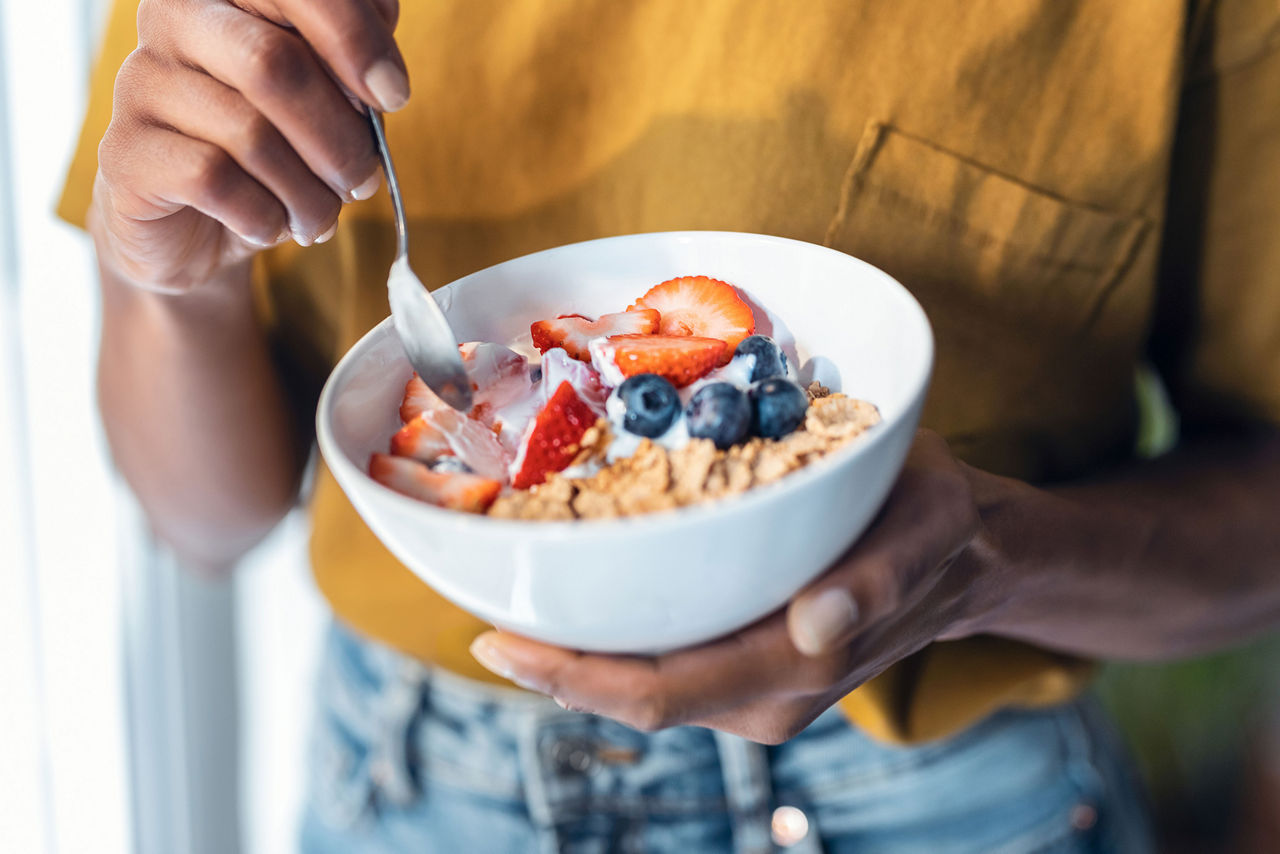
Daily Nutrition & Well-being
Three Vital Foods and Nutrition Trends
Susan Bowerman, M.S., R.D., CSSD, CSOWM, FAND – Sr. Director, Worldwide Nutrition Education and Training 19 October 2023
The latest nutrition trends are pretty easy to spot. We often hear about new food and diet trends from friends, family, social media and soon there’s a whole host of new food products on the grocery shelves. When it comes to food trends, which ones really can benefit our well-being and which ones are a fad?
Our Senior Director for Worldwide Nutrition Education and Training, Susan Bowerman, attended the annual Academy of Nutrition and Dietetics in Atlanta, Georgia to spot the latest nutrition trends. Here’s what she found out.
This is always a fun and interesting meeting to attend – not only for the educational sessions, but also because you can view and sample hundreds of new food products from different vendors under one roof. These are my top three trends from this year’s meeting that you should keep an eye out for.
Protein Snacks
One of the most obvious food and nutrition trends at the meeting was protein. Many of the vendors that I spoke with were eager to tell me how much protein was in their products – especially in snack foods! I was really happy to see this because it suggests that we may be starting to move away from the idea that snacking is bad and that well-balanced, healthy snacks now have their place in our cupboards.
Snacking has got a bad reputation because many people associate snacking with “snack foods” that offer little nutritional benefit. Snacking is often considered bad because it’s viewed as something we do primarily for entertainment and not as a way to boost our intake of vitamins, minerals or protein.
A healthy snack that contains protein can serve a number of important purposes. It can help to keep hunger at bay1 in between meals and it also provides you with another ‘eating opportunity’ to sneak more nutrition into your day.
Gluten-Free is Here to Stay
Whether or not people need to go gluten-free, the gluten-free trend could help to add more variety and nutrition to your diet. Since the primary source of gluten in the diet is wheat, this trend is introducing us to all kinds of interesting grain alternatives such as quinoa, buckwheat, millet, teff, amaranth and foods made from them. This is a great way to add variety to your diet, as every plant offers up its own unique set of nutrients, you’ll also be getting a wider range of vitamins, minerals and phytonutrients.
However, there is one thing worth considering: gluten-free doesn’t necessarily mean low-calorie. Many people have mistakenly jumped on the gluten-free bandwagon, assuming that it was a straight path to weight loss. Ten or fifteen years ago, that might have been true as there were so few gluten-free products available that avoiding gluten meant (in essence) avoiding wheat and everything that was made from it. Back then a gluten-free diet consisted primarily of fruits, vegetables and protein – and less refined carbohydrates – so many people followed it.
The “Good” Bacteria
There is an intense research interest focused on the gut microbiome. From what I saw at the meeting, you’ll probably be seeing more and more products that are designed to support the growth of these “good” bacteria.
Fermented foods can be the way we get these good bacteria into the gastrointestinal system2. Most people are familiar with fermented dairy products (such as yoghurt and kefir) as sources of these bacteria. I also sampled something new: a cultured (fermented) cottage cheese. There were also packaged fermented beetroots and carrots.
1Njike, et al., 2016. Adv Nutr, 7(5), 866-878
2Ref. Dimidi E, et al. Nutrients. 2019 Aug 5;11(8):1806


